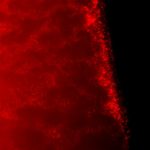Link to Pubmed [PMID] – 36240268
Link to DOI – 10.1126/sciadv.adc9340
Sci Adv 2022 Oct; 8(41): eadc9340
Glycine receptors (GlyRs) are ligand-gated ion channels mediating signal transduction at chemical synapses. Since the early patch-clamp electrophysiology studies, the details of the ion permeation mechanism have remained elusive. Here, we combine molecular dynamics simulations of a zebrafish GlyR-α1 model devoid of the intracellular domain with mutagenesis and single-channel electrophysiology of the full-length human GlyR-α1. We show that lateral fenestrations between subunits in the extracellular domain provide the main translocation pathway for chloride ions to enter/exit a central water-filled vestibule at the entrance of the transmembrane channel. In addition, we provide evidence that these fenestrations are at the origin of current rectification in known anomalous mutants and design de novo two inward-rectifying channels by introducing mutations within them. These results demonstrate the central role of lateral fenestrations on synaptic neurotransmission.



